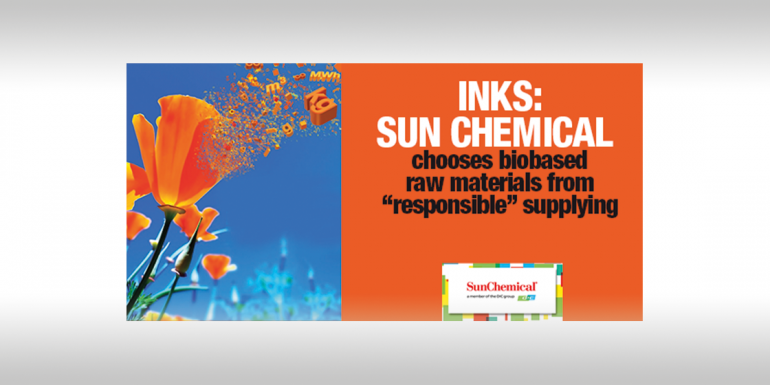Inks: when sustainability starts with raw materials

By proactively collaborating with suppliers, customers and trade organizations, Sun Chemical helps the industry to achieve increasingly advanced eco-efficiency objectives. The Group makes a constant commitment to R&D to reduce the environmental impact of its inks, with particular attention to the "responsible" procurement of raw materials.
![]() «Sun Chemical's commitment is - as the world's leading manufacturer of inks, paints, pigments and other cutting-edge materials including adhesives - to guide the industry in which it operates by being clear and minimizing the impact of our products in the environment during their lifecycle». Thus begins Rudi Lenz, Chairman and CEO, in presenting the ninth edition of the Sun Chemical Sustainability Report (member of the DIC Group).
«Sun Chemical's commitment is - as the world's leading manufacturer of inks, paints, pigments and other cutting-edge materials including adhesives - to guide the industry in which it operates by being clear and minimizing the impact of our products in the environment during their lifecycle». Thus begins Rudi Lenz, Chairman and CEO, in presenting the ninth edition of the Sun Chemical Sustainability Report (member of the DIC Group).
In line with this statement, is also the choice of the raw materials necessary for the production of inks, both solvent based and water based. In this context, one of the most interesting trends towards which the Group addresses important research and development efforts is the use, to an ever greater extent, of bio-derived (vegetable-based) raw materials, replacing the traditional ones of fossil origin.
 Reducing dependence on limited and non-renewable resources is a farsighted and environmentally-friendly choice, since the bio-based alternatives selected by Sun Chemical come from suppliers that operate according to set "sustainability" objectives.
Reducing dependence on limited and non-renewable resources is a farsighted and environmentally-friendly choice, since the bio-based alternatives selected by Sun Chemical come from suppliers that operate according to set "sustainability" objectives.
Solvent based liquid inks...
The resins used for the production of this type of liquid inks are polyamide and nitrocellulose. With regard to the latter, Sun Chemical ensures that cellulose - its main raw material - comes from responsibly managed and certified forests, as well as in many cases, with PEFC or FSC forest certification. The Group’s prime nitrocellulose supplier, for example, guarantees that the rate of re-planting is at least twice the rate of tree felling and that the nitration of cellulose is carried out in order to recycle the acid, so as to reuse it, on average, five times.
Also with regard to polyamide resin, the oily fatty acids that substantiate its content come from pine forests, these too managed responsibly.
A well as concerning the solvent used in the production of liquid inks, Sun Chemical adopts ethanol of biological origin, derived from sugar cane or cereal crops, depending on the supply region. .
…and waterbased
Historically, the resins used for solventless liquid inks are based on acrylic chemistry, which uses raw materials derived from fossil sources. However, as part of recent research and development programs, Sun Chemical has created inks in which a significant percentage of the resin content - over 65%, for almost all the main applications - is of vegetable origin.
In most cases, this change has had no real effect on ink performance and has not resulted in any surcharge.



















